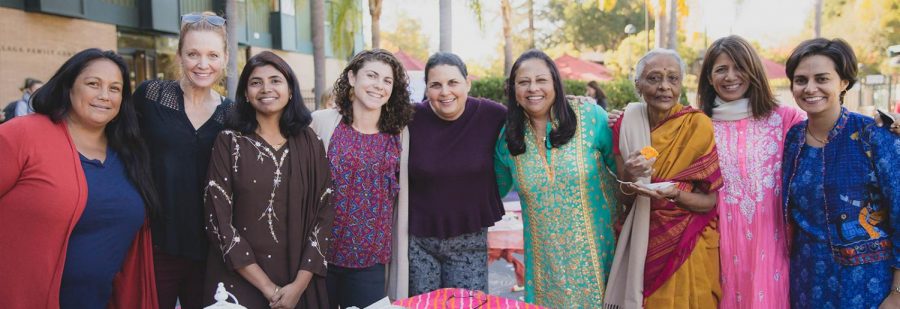Antiracist curriculum changes
Differences within Castilleja’s English and History Social-Science departments this year
A group of parents, teachers, and faculty come together to give Castilleja students a taste of their culture through food, drinks, dancing, and more
A new school year often brings an air of excitement and anticipation to the Castilleja circle, yet this year also brought the immense changes we as a country underwent during the summer. The reemergence of the Black Lives Matter movement and the thousands of protests to stop systemic racism led to many changes in our government, workplaces, and schools. At Castilleja, these changes began to take shape over the summer as all the faculty members worked with Activist-in-Residence Milton Reynolds to brainstorm the best way to teach and adapt their curriculums in the coming fall. It was known throughout the Castilleja community that anti-racism would be an active part of many courses this year.
Despite the challenges of teaching and learning online, Castilleja faculty have done an immense amount of work to incorporate the new anti-racist competencies into their curriculum. Both the English and History-Social Science departments have implemented large curriculum changes, ranging from more books from authors of color to purposeful conversations around privilege and systemic racism in America.
In the English Department specifically, these changes have started in the 6th grade classrooms. Along with reading the novel The Evolution of Calpurnia Tate, the 6th graders will engage in discussions about privilege and the experience of Black Americans in the 19th century. These conversations provide the 6th graders with a strong foundation for discussing these important topics in the future, as well as in English courses to come. In the 9th grade English curriculum, some novels have been cut in order to read from more diverse perspectives, especially female authors and authors of color. The 9th graders will read Their Eyes were Watching God and The Joy Luck Club, as well as foundational texts from other cultures. Similarly, in the junior year AT English: American Voices course, the curriculum has also changed quite a bit. English faculty member Laura Hansen told me about the importance of discussing both the vocabulary used in these texts, as well as the context in which they took place. She writes, “As we introduce and discuss each text, we teach relevant terms (like internalized racism, abstract liberalization, and classism) and contextual information (like nativism in the 1920s or housing discrimination in the 1950s) to help us unpack what’s happening in the text.”
The History Social-Science Department has undergone similar changes, with many classes shifting their focus to antiracist teachings and changing their curriculums to implement new perspectives. In the sophomore Individual & Society course, teachers have introduced two new units in feminism and anti-racism, with students learning to critique the biases of the philosophers whom they learn about. faculty member Joseph Mitchell writes, “It is our hope that in such an environment, students will not only develop a broad and diverse perspective, but also cultivate the skills necessary to discuss potentially divisive issues confidently and productively.” Other History and Social Science electives have incorporated new current events and points of debate into their curriculums. In the Macroeconomics Honors class, students will now learn about recent proposed systemic changes including police reform, race-based income, health, and housing disparities.
Overall, the changes made across these two departments specifically as well as in the school as a whole have altered the way teachers are approaching their classes this year. All the teachers I’ve heard from expressed excitement about their specific classes’ or department’s changes and an eagerness to keep learning and promoting anti-racism both in and out of the classroom.


